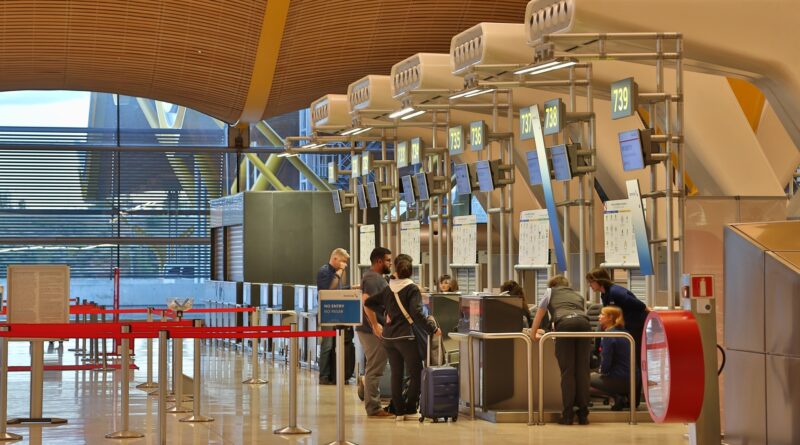10 things to know about the launch of the new EU border system
After several delays, the new EU border management system will be launched in autumn, Belgium’s Minister of Interior Annelies Verlinden confirmed after the meeting of EU home affairs ministers on Thursday.
The EU Entry/Exit System (EES) will register in an EU-wide database information about non-EU citizens travelling for short stays to the Schengen area, the border-free zone including 29 European countries. The system was designed to ensure that visitors do not overstay their visa limit or the 90 days in a 180-day period allowed for visa-exempt citizens.
Minister Verlinden described it as a “milestone” in the management of the EU external borders. When it was adopted in 2017, the European Commission said that the EES “will contribute to the fight against terrorism and serious crime… and will allow for an increased automation of border controls, improved detection of document and identity fraud as well as better monitoring of unauthorised short stays of non-EU nationals.”
How will the EES work in practice and who will be affected? This is what we know so far.
1. No more stamping of passports
The EU Entry/Exit System (EES) will digitally register travellers from non-EU countries who possess a short-stay visa or do not need one, each time they cross a border in or out of the Schengen area by air, land or sea. Passports will be scanned instead of being manually stamped.
At the first crossing into the Schengen area, fingerprints and photos will have to be registered under the supervision of a border guard. The extra time needed for such initial step has raised concerns of possible long queues that could affect everyone.
The area covered by the EES includes EU countries except for Ireland and Cyprus, plus Iceland, Liechtenstein, Norway and Switzerland.
2. The new travel authorisation system (ETIAS) will follow
Six months after the introduction of the EES, the European Travel Information and Authorization System (ETIAS) is expected to be introduced too.
The ETIAS will require people from visa-exempt countries who travel to the Schengen area for short stays to apply for an authorisation before departure. This will allow authorities to assess “whether travellers pose a security, public health, or irregular immigration risk” before they arrive at the border.
The ETIAS will be valid for three years or until the passport used in the application expires, whichever comes first. Its cost will be 7 euros, but it will be free for people who are under 18 or above 70 years of age, or for family members of EU and Schengen countries nationals.
Similar travel authorisations exist in the US, Canada and Australia, and the UK is gradually introducing its own – the Electronic Transport Authorisation (ETA).
3. Several IT systems will be connected
Behind the EES and ETIAS, there is a huge IT infrastructure which allows the central system to communicate with the national ones. These will also be connected to the Visa Information System (VIS), the Schengen Information System (SIS) and the European criminal records information system (ECRIS). Problems in the “interoperability” of the systems in the past have led to delays in the launch of the scheme, which was initially due in 2020.
4. The launch date was chosen to avoid peak traffic time
News outlets have reported that the launch date of the EES will be Sunday 6 October, but the date is still unconfirmed. The decision to launch in autumn was made to avoid peak traffic times. France in particular had asked not to start around the Paris Olympics to avoid massive disruptions. Should the launch be delayed again, it will probably have to be postponed by six months or a year, to avoid Christmas and other major holidays.
5. A mobile app is in preparation
The EU border agency Frontex is developing a mobile app that travellers could use to pre-register with the EES (but photos and fingerprints still have to be taken at the border at the first entry). The app will be made available to Schengen countries, which will be free to decide whether using it or not, and tailor the front-end to their needs. It is not known yet when the app will be ready for the public, but the European Commission has clarified that its availability “is not a condition” for the entry into operation or the functioning of the EES.
6. Personal data will stay in the database for three years
The EES will register the traveller’s name, date of birth, type of travel document and number, fingerprints and facial images, date and place of entry and exit, and any refusals of entry. The data will remain in the database for three years on a rolling basis, re-starting at every entry.
7. Carriers will be required to make checks
Air, land and sea carriers will also play a role in the EES. Currently, they only have to check the passport of passengers. In the future they will have to check via the ‘carrier interface’ that passengers can travel to the Schengen area (i.e. they have a valid visa or are within the 90/180 days limit and have the ETIAS) before allowing them to board. If a carrier boards a person without querying the interface and the traveller is then refused entry at the border, the company will have to take the passenger back and face penalties.
8. The UK faces a unique situation
Compared to other Schengen external land and sea borders, the UK faces a unique situation because an international agreement established that checks for France and the EU are operated at the port of Dover, the Folkestone Eurotunnel terminal and London’s St. Pancras station (and for the UK in Calais and at the Eurostar terminals in Paris and Brussels). Some 11 million people travel through the port of Dover each year and the majority are non-EU citizens.
Eurotunnel is installing 224 EES kiosks at its terminals in France and the UK. Eurostar is placing 49 kiosks at St. Pancras station and preparations are ongoing at the port of Dover, where extra lanes have been created and coaches will be checked in a separate area to free up space.
The House of Commons European scrutiny committee carried out an inquiry on the risk of traffic disruptions caused by the EES in the UK. Several travel operators have warned about possible delays and long queues in Dover. Guy Opperman, Under-Secretary of State at the Department for Transport, said at a recent meeting that he was reassured by the EU agreement of a six-month “soft launch” during which the implementation of the system will be more flexible.
9. There will be many exemptions
The EES will not apply to EU citizens and non-EU citizens who reside in EU countries. In this regard, the UK and EU governments have urged British citizens living in European countries under the terms of the EU withdrawal agreement to make sure they have the right residence documents to make sure they are exempted from the system.
10. There are open questions about dual nationals
Monique Hawkins, responsible for policy and research at EU citizens’ rights group the3million, has warned that once both the EU and the UK have introduced their travel authorisation systems, dual EU-UK nationals may face some difficulties. If they buy a return flight ticket, they risk not being able to check in for one leg of the journey without having to pay for a travel authorisation, even if they should be exempt. This could be resolved if carriers will allow to register more than one passport, but at the moment only some do.
Claudia Delpero, Europe Street News © all rights reserved
Image by Yong Wang from Pixabay
Europe Street News is a news service on the European Union and citizens’ rights. We are fully independent and we are committed to providing factual, accurate and reliable information. As citizens’ rights are at the core of democracy, our website and newsletter are free to read. Please consider making a contribution of your choice using this link or the menu below so we can continue and expand our coverage. We are always happy to hear your suggestions and ideas for improvement. Thank you!





